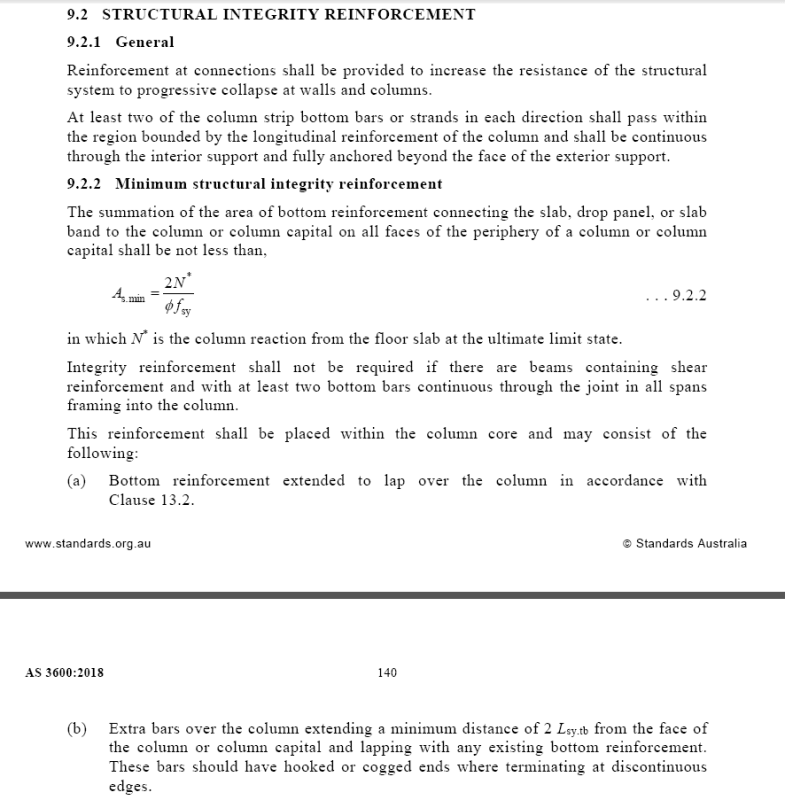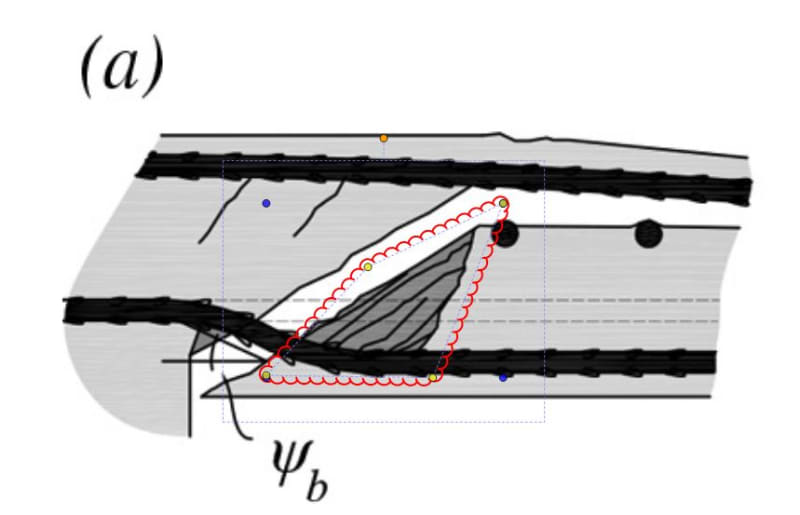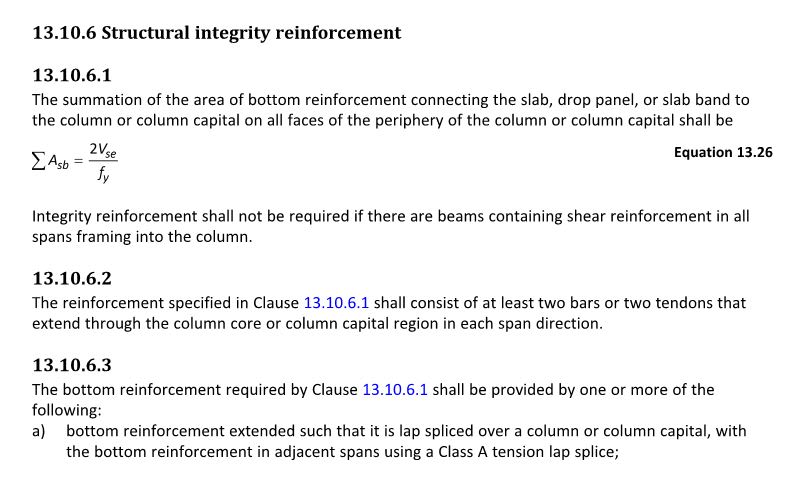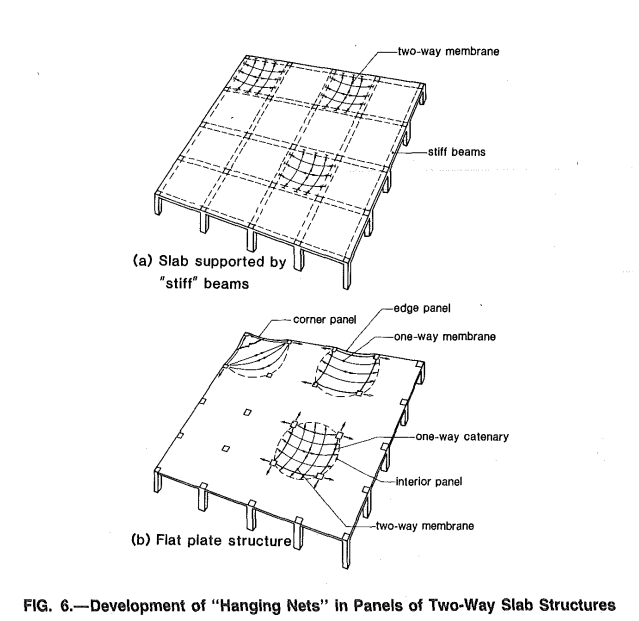Additional thoughts based on subsequent discussion:
1) In my opinion, a fundamental understanding of how integrity reinforcement is meant to work is necessary precisely so that designers can extend and modify such code provisions rather than just following them rote. In this case, I believe that a fundamental understanding of the mechanics
should be steering designers away from an integrity reinforcing layout that would provide equal capacity at each of the participating sides of a column. More on this below.
2) As shown below, the name of the game with integrity reinforcing is creating the ability to develop a secondary punching shear frustum further out than the original, inadequate frustum. As such, another set of concrete struts develops just outside of the original failure surface. In order to keep the demands on those struts minimal, it would behoove the designer to distribute integrity reinforcement about the column in proportion to the side lengths rather than simply splitting it equally among the four sides. With this in mind, it would make no sense to me to take a 10" x 48" column and pound half of the integrity steel through the short dimension where, surely, you'll just overload the extended failure frustum. It would be vastly more preferable, I think, to spread that demand about the column as much as possible so that concrete shear stresses remain low. This is one instance where I feel that a 50/50 distribution of integrity steel would be ill advised for a wallumn.
3) For situations that are, effectively, three sided punching shear (edge column / sleeve), not all of the sides will be of equal value when it comes to providing fail safe reliability against ULS punching shear. In my opinion, it is clear that the bars that are able to pass through the column and extend out the other side are of much greater reliability than those that must be dubiously developed
within the column. This is a second instance where I feel that a 33%X3 distribution of integrity steel need not be rigorously applied.
4) Codes vary on this a bit but many reference the desire to create the ability to form a rebar net to hold up a slab post-punching shear. That, in addition to the primary mechanism of last ditch punching shear resistance. In this sense, there
is some tacit acknowledgement of catenary action. In the Canadian code, one is allowed to "lap" integrity reinforcing with the distributed bottom steel mat to achieve this. As such, it seem more sensible to distribute punching shear reinforcing such that it is lapping with available rebar of a similar, available capacity to itself. For a 10"x48" wallumn, it seems unwise to dump a gaggle of 30 M integrity steel through the short side of a wallumn where it would be lapping with, say, 15M@300 bottom bars. Much better to distribute the integrity bars along the 48" length in hopes that slab reinforcement capacity is of a similar order as the integrity bar capacity. This is a third instance where I feel that a 50/50 distribution of integrity steel would be ill advised for a wallumn.
5) With respect to the appropriateness of standard punching shear provisions to transfer slab situations goes, I agree that designer discretion is required. That said, I believe that:
a) If the slab is stiff enough to convincingly behave as a two way slab, then I think that conventional punching shear provisions would apply and that the eccentricity of load could be handled as it normally is, as a load producing moment on both the punching shear failure frustum and on the supporting column(s).
b) I feel that the design process itself will often steer designers towards the right choice for #5a. If column moments and eccentric punching shear demands prove onerous to deal with, then a designer should either stiffen the slab or start considering one way transfer element design options and the shear transfer mechanisms appropriate to that.







